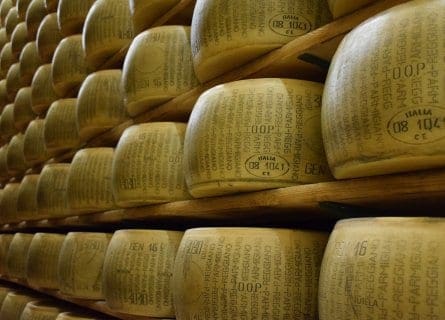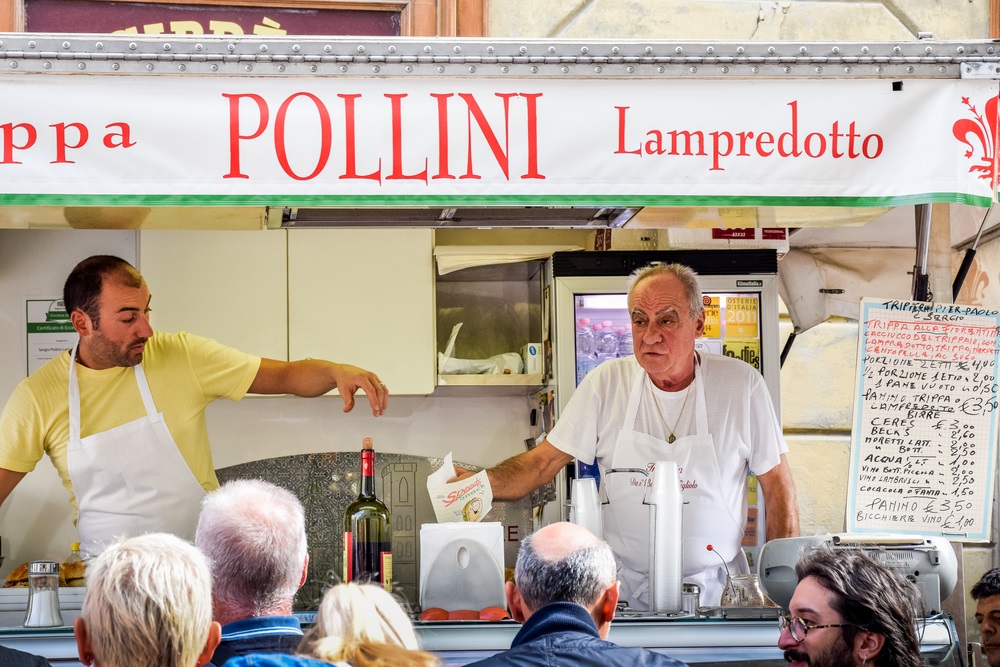
Italian Cheese Guide: Explore Diverse Varieties & Regional Specialties
March 6, 2017
Discover Italy's rich cheese variety, from Parmigiano to unique regional specialties marked by DOP/IGT quality. Explore Italy's cheese landscape.
By: Nicole Dickerson / Last updated: December 23, 2023
Estimated reading time: 4 minutes

Guide to Tuscan Gastronomy and Cuisine: Read more
Regional Cuisines:
Arezzo, Lucca, Maremma, Pisa, Siena
No trip to Florence is complete without devouring a Bistecca alla Fiorentina, which is popular at many Florence restaurants. These massive steaks are three to four fingers high and meant to be shared. The steaks come from the Chianina Tuscan breed of cattle and are extra tender thanks to the 15-to-21-day aging process.
Florence’s hearty beef stew called peposo is a must-try for meat lovers. You slow-cook the beef with garlic, a ton of pepper (hence the name), and a whole bottle of Chianti. Often served with polenta, peposo is the perfect Tuscan comfort food.
For street food in Florence, look to the classic lampredotto or trippa. Unique to Florence, lampredotto is a cow’s fourth stomach that’s slowly cooked with tomato, onion, parsley, and celery until it’s super tender and served with the vegetable broth it is cooked in and served with salsa verde. Trippa, or tripe, is the edible lining of a cow’s stomach prepared similarly. Both are typical examples of cucina povera in Tuscan cuisine.
Schiacciata is a typical flatbread of Florence worth seeking out. The name means pressed or squashed, referring to the breadmaking process, which involves pressing the dough down with your fingers. Schiacciata has a crunchy exterior with a moist interior and can be topped with tomatoes, savory herbs, or salt.
Otherwise, cantucci and Vin Santo are ideal for ending a Tuscan meal. The almond biscotti perfectly accentuates the sweet and nutty flavors of this famous Tuscan dessert wine. You commonly dip Cantucci in Vin Santo, resembling a Tuscan version of cookies and milk.
To celebrate Carnival, Tuscan families make a fried dough dessert topped with icing sugar called Cenci, which translates to rags. This Italian Carnival dessert gets its name from the shape into which you casually cut the dough.
Fritelle di riso, or rice fritters, are another popular dessert traditionally made during Carnival. The dough is made of flour, rice, citrus zest, sugar, eggs, and a liqueur of choice, then fried until addictingly crispy.
Local bakeries also make schiacciata alla Fiorentina, a vanilla and orange laden cake, for Carnival. You typically dust it with powdered sugar, outlining the Florentine fleur-de-lis on top, and sometimes fill it with custard or cream.
While gelato options proliferate the city of Florence, there are a few other local specialties to consider. Originally created for Medici party guests during the Renaissance, zuccotto is a much-adored classic. This domed cake is one of the first Italian semifreddi or semi-frozen cakes made from ricotta, cocoa, citrus, and Alchermes liqueur.
Wine-making in Tuscany has a rich history dating back to the Romans, Christian monks in the Middle Ages, and aristocrats during the Renaissance. Tuscan wines like Vino Nobile di Montepulciano have been popular since the 16th century, with famous admirers like William III and Jonathan Swift. Tuscany is a diverse region with various wine areas, all sharing Sangiovese as the primary red grape and Trebbiano as the dominant white grape. Northern Tuscany features mountainous terrain, while Florence and Pisa are in the central and southern parts. Chianti, known for its prestigious Chianti Classico DOCG, extends from Florence to Siena, and other subregions like Chianti Rufina are picturesque. Classic Chianti wine includes Sangiovese and sometimes white grapes.
If you would like us to customize an exclusive luxury tour, contact us and let us know your travel plans. We offer luxury food and wine tours for private groups of a minimum two guests. In addition, all of our private, chauffeured tours are available year-round upon request.

